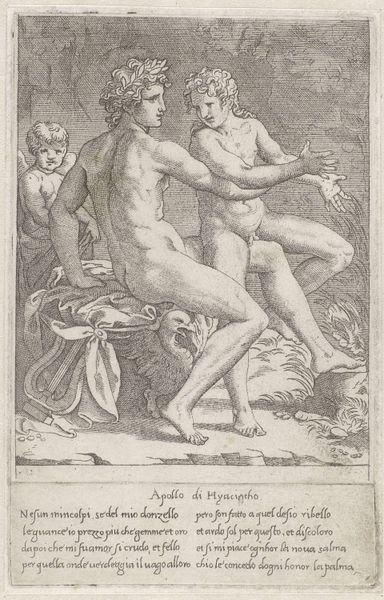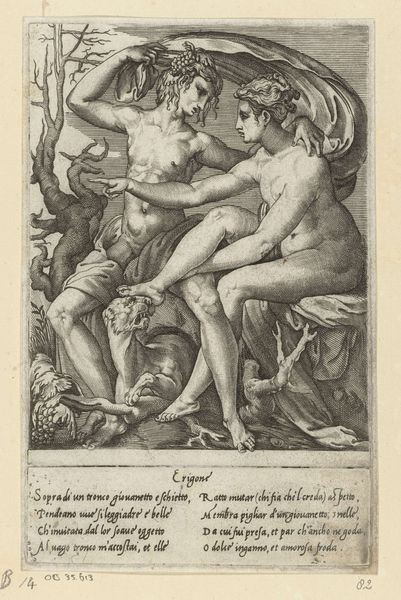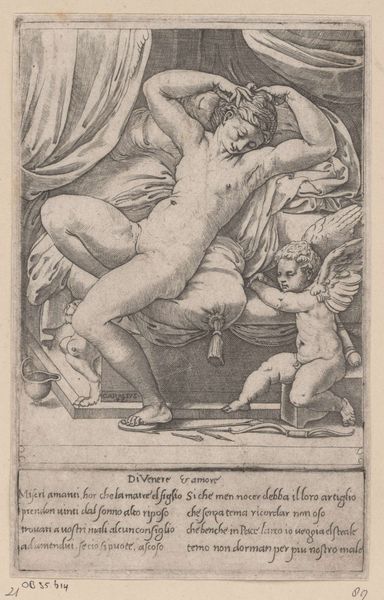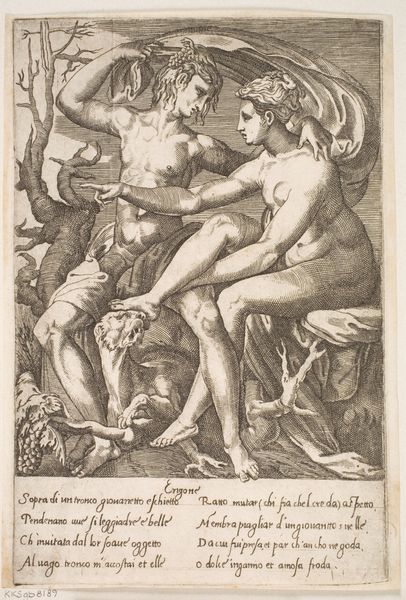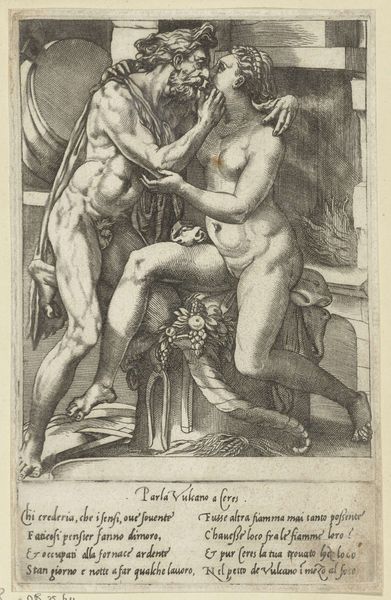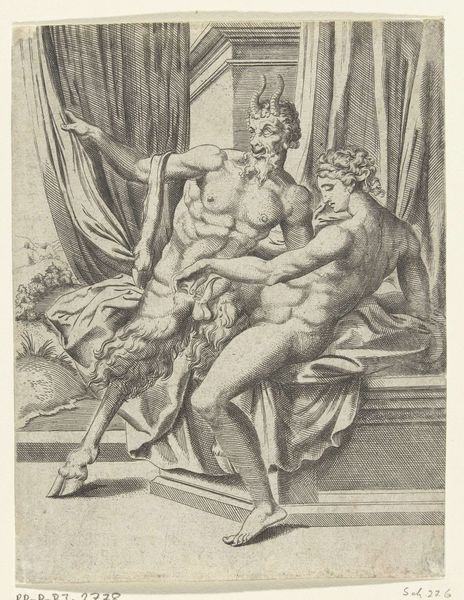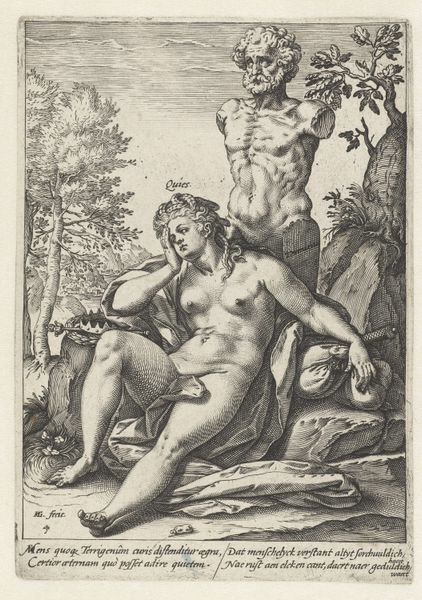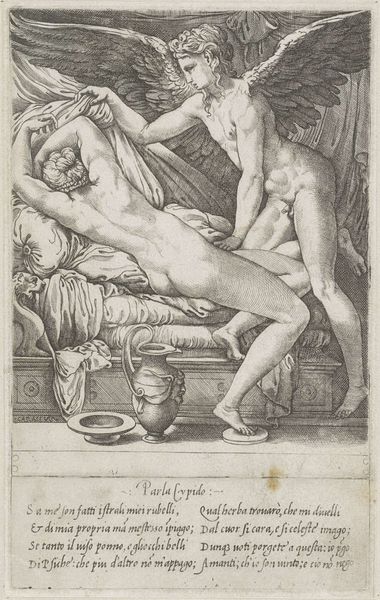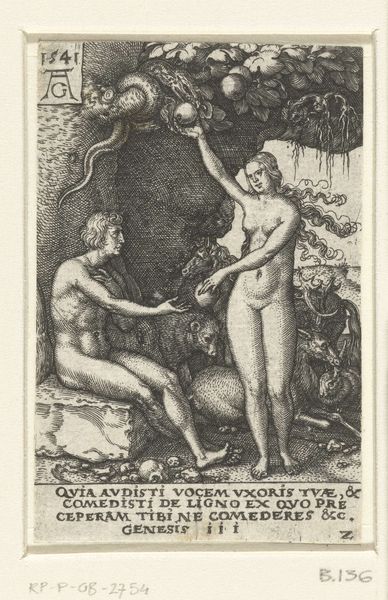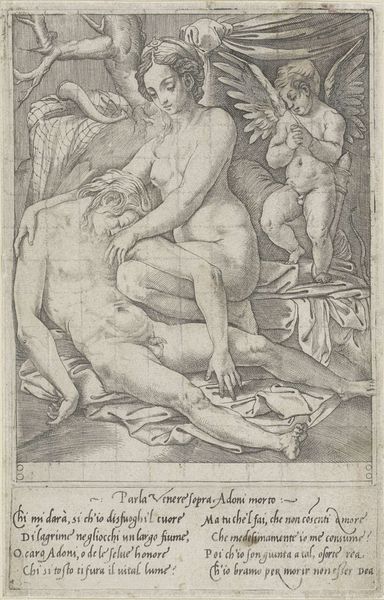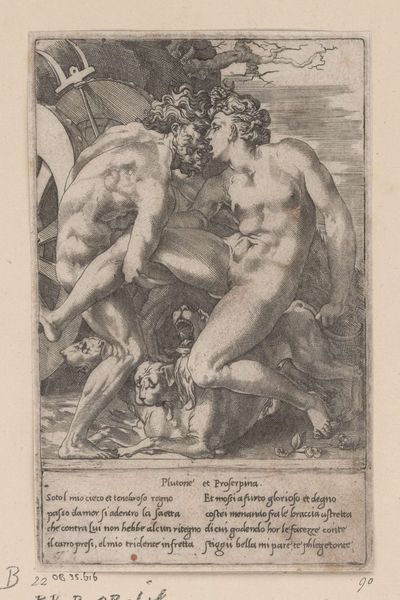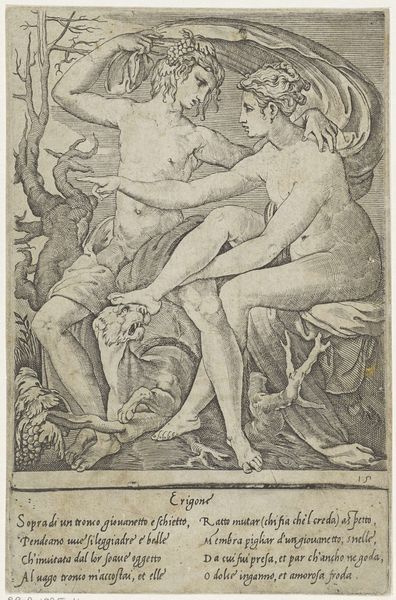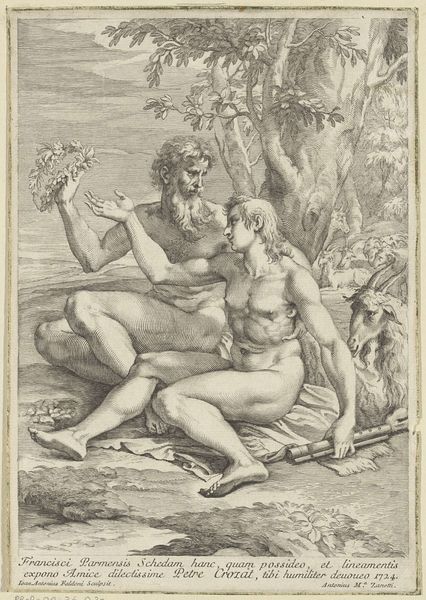
print, engraving
#
allegory
# print
#
mannerism
#
italian-renaissance
#
nude
#
engraving
Dimensions: height 212 mm, width 136 mm
Copyright: Rijks Museum: Open Domain
Curator: This engraving, dating from the Italian Renaissance and created by Giovanni Jacopo Caraglio between 1515 and 1565, is titled "Loves of the Gods" and resides here at the Rijksmuseum. Editor: My initial impression is of organized chaos. The intertwining figures and the dramatic shading create a visually arresting and somewhat disorienting image. Curator: Yes, the composition is certainly complex. Caraglio adopts a Mannerist style here, which favored such dynamic, crowded arrangements and exaggerated forms. It speaks to a time of questioning established aesthetic principles, leading to inventive visual expression. The print reproduces a design by the painter Rosso Fiorentino that became celebrated and very influential at the time. Editor: We're immediately confronted with an allegorical depiction of Mars and Venus, which carries substantial art historical weight. How was this romanticizing or perhaps even trivializing of mythological figures perceived in its time, and how does it resonate with a contemporary audience? Curator: The eroticism wouldn’t have necessarily been seen as trivializing, rather as celebrating human beauty and classical antiquity, especially given the cultural context of the Renaissance where interest in classical sources was revived. The figures, so precisely rendered, display the engraver’s masterful ability to work with light and shadow to accentuate form and create visual tension. The inclusion of cupid and the little dog only further suggests a rich tableau of classical and sensual delights. Editor: That's interesting. Looking closer, though, the idealized bodies seem almost contorted to fit the composition. It calls into question this "celebration," pointing to more calculated, art-driven ideals rather than any authentic reverence for sensuality or nature. Curator: Perhaps that tension between naturalism and artificiality is precisely the point! The Mannerists relished such ambiguities, playing with perception and artistic conventions. Moreover, the subject is one of allegory, of stories told as archetypes of love, beauty, and conflict that continue to appeal across time. Editor: Absolutely. This print reveals a lot about shifting aesthetic priorities and also the evolving role of narrative in art. The way it merges sensuality with such obvious artistic contrivance shows how invested this period was in finding its own voice—quite deliberately breaking away from convention. Curator: In its time and ours, then, it shows how artists adapt and repurpose traditions to articulate novel concerns. What was born of reproduction, thus lives on with something remarkably vital, and relevant, about it.
Comments
rijksmuseum about 2 years ago
⋮
No collection of erotic prints should be without Caraglio’s Loves of the Gods. Consisting of twenty-some prints, this scandalous series presents the amorous escapades of the classical gods fairly explicitly. The deities give in to pure lust with great abandon, which involves quite some acrobatic feats. These scenes will doubtless have titillated many a viewer.
Join the conversation
Join millions of artists and users on Artera today and experience the ultimate creative platform.
